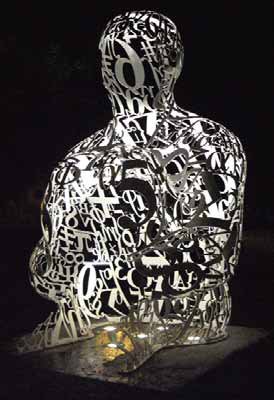SEJournal Online is the digital news magazine of the Society of Environmental Journalists. Learn more about SEJournal Online, including submission, subscription and advertising information.

E-Reporting Biz
By BUD WARD
Here’s some guidance.
SEJ members need no reminders that the world of journalism is changing, evolving, and, yes, in some ways even crumbling, right before their eyes.
But rather than feeling like door-to-door sales folks for Beta cassette recorders or automobile cassette decks, journalists should see in the changes all the opportunities and promises of new ways to communicate more effectively in a world as needy as ever for independent reporting, writing, and editing.
Let’s grant that it is not always easy, given the attention-getting news of outstanding and veteran environmental journalists — just recently, the Kansas City Star’s Mike Mansur, now editing his final editions of SEJournal, and L.A. Times veteran reporter Margot Roosevelt — having been “whacked”(Roosevelt’s term) as the result of ongoing newsroom cuts.
Even a casual viewer of broadcast or cable news or of virtually any high-quality daily newspaper (remember those?) this past summer cannot have missed the specter of News Corporation’s Rupert Murdoch and son being called before the British parliament. Just one part of what has now become continuing and expanding investigations into tawdry reporting techniques, in that case their now-defunct News of the World’s hacking into private citizens’ and some officials’ private cell phones.
Can you imagine? Can you just imagine the reaction here in the States if a major news media executive were called before Congress to testify under oath on a major national newspaper’s news-gathering techniques? Those anti-Fox News zealots, including some in the news media and revealing more their political biases than their commitment to independent journalism, would have the proverbial cow. Regardless of one’s personal political leanings, those inwardly hoping for a spread of the sleazy scandal to the U.S. — and, specifically to Fox News, The Wall Street Journal or New York Post and other U.S.-based Murdoch holdings — need to think deeply about what’s best for journalism generally, and not what might be worst, for example, for the ideological pundits who populate Fox opinion shows.
Closer to home for most environmental journalists, consider a recently completed study of the impartiality and accuracy of BBC’s science coverage, and inevitably of its climate science coverage.
The study came about as a result of the BBC Trust’s assignment about a year ago to an emeritus genetics professor, no less, at the University College London. (The Trust is an operationally independent heir to the BBC’s former board of governors, representing license fee payers, “the public who own and pay for the BBC,” in its words. Think of it as an ombudsman on steroids.)
The Trust in 2010 asked Professor Steve Jones to evaluate BBC science coverage, a step that climate science deniers doubtless hoped would result in a strong rebuke for “warmist” biases.
“Nothing could be further from the truth,” Jones wrote in a 103-page report, in which he said the challenge of reporting accurately, and without “false balance,” is nowhere better illustrated than in coverage of climate change.
While offering some concrete steps for improving its science coverage, including its climate coverage, Jones wrote that his “most important conclusion” is that BBC science coverage overall “is of high quality ... widely praised for its breadth and depth, its professionalism, and its clear, accurate, and impartial manner. Science is well established into programming, on a diversity of platforms.” (Do I digress here in wondering of how many U.S. news organizations such a judgment could be confidently expressed?)
Not that everything is perfect and beyond improvement, of course. Jones recommended that BBC “take a less rigid view of ‘due impartiality’ as it applies to science” and that the broadcaster “take[s] into account the non-contentious nature of some material and the need to avoid giving undue attention to marginal opinion.” Sounds like something much of the pedigreed U.S. scientific community has been saying for years about climate coverage.
Some more tidbits from the Jones report to the BBC Trust, the full text of which is available and must-reading for serious science journalists and science journalism educators:
… impartiality checks are built in to the scientific enterprise. The objectivity of researchers is judged as they undergo a series of painful processes from the successful grant application, to endless discussion within a group as to the validity of a result, to a journal’s peer review before a piece becomes public and then, quite often, to the presentation of contrary views in the scientific literature. Many of those put up in opposition to a scientist on the broadcast media have had, in contrast, no scrutiny at all of the claims they put forward. A certain amount of emphasis might be placed on the differential examination that the ideas of each party have undergone when considering the need for due impartiality ...
Exaggerated, financially compromised, or overtly dishonest work should always be open to question; but science is not intrinsically, as elements of the media sometimes imply, a shady pastime awaiting exposure by the bright beam of reportorial truth... bogus impartiality (mathematician discovers that 2 + 2 = 4; spokesperson for Duodecimal Liberation Front insists that 2 + 2 = 5, presenter sums up that “2 + 2 = something like 4.5, but the debate goes on”) can, perversely, lead to bias in its own right, for it gives disproportionate weight to minority views — and some of the minorities involved are expert in taking advantage of the platform offered.
Responding to the Jones report, the BBC Trust accepted the recommendation that it name a Science Editor to its news activities (whodathunk it didn’t already have one?!) and that it strengthen and broaden its sources of science information contacts. The Trust says it will monitor BBC progress in these areas quarterly and report back its progress after a year.
Journalism Partnerships ... Surely. But How?
In the context of a changing media environment, the Trust also indicated it accepts the report’s plea that it establishes better collaborations — partnerships, one might call them — with the scientific community.
A good idea? Of course, it is. And it’s clearly more necessary in this changing world of mainstream journalism, not to mention the growing salience and complexity of science as a component of public policy.
 |
|
Alchemist by Jaume Plensa, 2010.
On permanent display at MIT, Cambridge, Mass. Like mythological alchemists who were believed to create gold from lesser metals, journalists today, in order to survive, are expected to perform their own version of alchemy — create more and better news coverage (now including multimedia) in less time with fewer resources from less-appreciative, more demanding management. Photo © Roger Archibald. |
But how? How best to both “partner”with the science community and maintain the fierce independence vital to the best journalism and the best scientific work? How to collaborate or participate, in other words, while still retaining the standing to observe and comment impartially ... and be seen as doing so?
A recent example illustrates the challenge. Respected long-time energy and environmental reporter John Carey, now freelancing after years of work in Business Week’s Washington, D.C., bureau, recently wrote of the contentious climate change/extreme weather nexus in one of America’s most respected scientific magazines, Scientific American.
It’s a dicey issue, with still plenty of room for debate on just where the science “stands” on the connections. At the end of each of Carey’s three series — in the fine print, one might say — was this credit (call it a disclosure?): “Reporting for this story was funded by Pew Center on Global Climate Change.”
Say what? A news outlet of the journalistic standing of Sci Am (that is, high) and a writer of the stature of Carey (also high) engaging with a respected organization, but in a way that, at its worst, could be described as little more than “sponsored journalism”? Is that right?
There is, of course, more to the back story here, and those interested can read more here and here. (Talk about disclosure! That first link is to the Yale Forum news article I wrote on the subject.)
Is that the kind of journalism-climate science collaboration or partnership we’ll see in the “new journalism”? If so, can its potential benefits be realized without running the risks of its potential downsides?
Blogger and long-time environmental writer Keith Kloor, to whose site that second link directs, has his doubts, and he’s been a lone wolf in the press critic blogosphere or elsewhere in expressing them.
“Astonished” over Carey’s acknowledgement that he had shared a first draft and a final draft prior to publication with folks at the Pew Center, Kloor decried what he called “a huge no-no in journalism.” While professing full editorial control over the content of the copy — and sticking to their guns on that point — Carey and Sci Am editorial management couldn’t convince Kloor that the story was treated “just like any other story” would be. While far from a critic of the Pew Center and of its climate activities, Kloor asked, “Am I the only one who has a problem with this whole arrangement?”
If so, it’s not clear that even Kloor’s self-made brand of independent journalism/blogging is the way of the future. Without any financing and conducted more or less from his abiding commitment to journalism and science, he recently found himself asked by a prominent national magazine editor if he couldn’t simply continue his site as a “public service.” The implication: Why a need for money in return for his labors? Speaking truth to power, as he does, is hardly widely seen as a career-building strategy in these challenging times, but finding the ideal journalism partner, à la the advice to the BBC from Jones, is easier said than done.
So what to do? Partnerships — with foundations, with nonprofits, even perhaps with some corporations or government entities — may inevitably be the Best Plan B given the near-term financial outlook for traditional “mainstream” news interests.
Examples such as ProPublica, the Center for Public Integrity, “Miller-McCune,” Minnpost.com, and several others at the regional and local levels give reason for hope and can serve, at least at some level, as potential models.
Here are a couple things to be wary of in considering such journalism “partnerships.” Does your dancing partner in itself make news, or wish to? That can be a bright red light, and certainly should at least be a blinking orange. Does your would-be partner have a single focus of interest ... the same issue you’re addressing as a “reporter”? Does it have an established record of funding other — and worthwhile and respected — journalism initiatives? Are they the kinds of journalists you want to be identified with?
It’s likely anachronistic, given the state of mass media today, to measure today’s news “partnerships” against the holier-than-thou separate-and-detached journalism standards of a bygone era (an era which likely doesn’t fully live up to its nostalgic reputation in any event). But that doesn’t mean serious journalists and editors can’t ask themselves those kinds of questions as they contemplate the journalism partnerships of a new day. How about starting with something like, “What would an Edward R. Murrow think? What would a David Broder think?”
Most important … what do you and your audiences think?
Bud Ward, one of the co-founders of SEJ, is editor of The Yale Forum on Climate Change & The Media, published by Yale University’s School of Forestry & Environmental Studies and its Yale Project on Climate Change Communication. The site is supported primarily with funding from The Grantham Foundation for Protection of the Environment which, among other things, funds the Metcalf Institute’s Grantham Prize for Excellence in Reporting on the Environment.
From the quarterly newsletter SEJournal, Fall 2011 issue.












 Advertisement
Advertisement 



